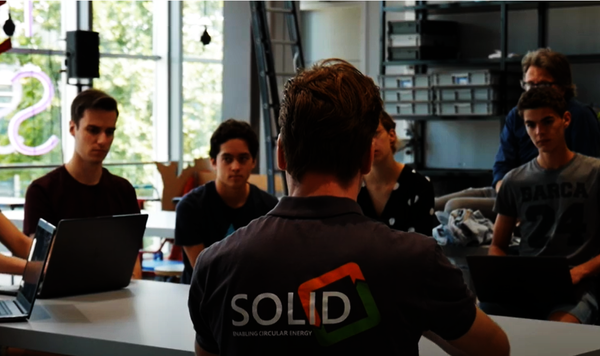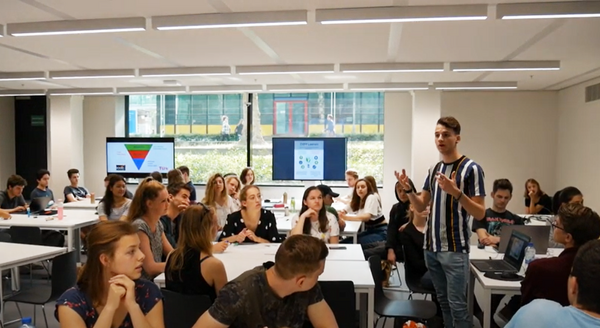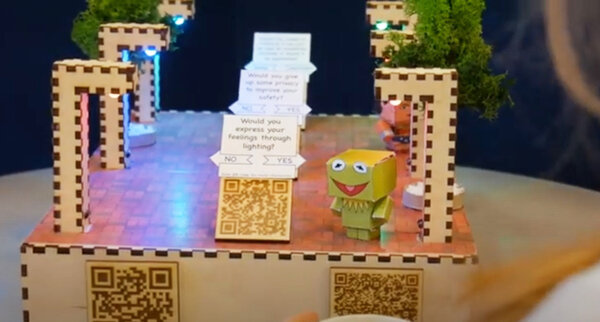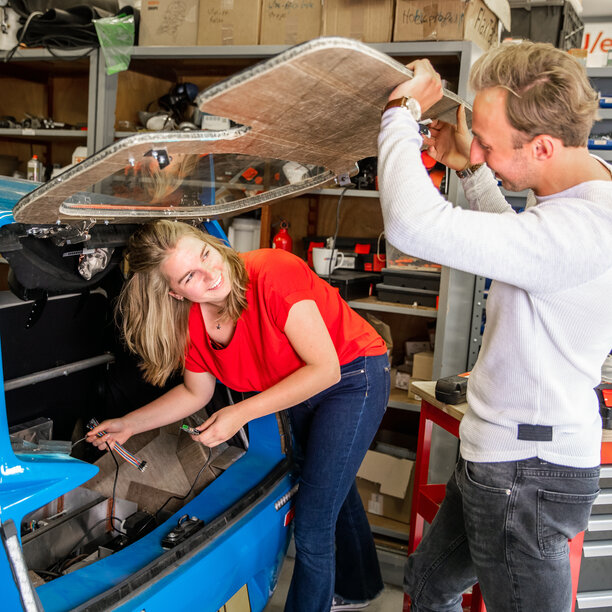“All students can find ethics interesting. It's a question of how you present it”
Challenge-based learning improves the relevance of ethics education for students.

As an ethicist and physicist, Gunter Bombaerts knows that enthusiasm for ethics education is not always guaranteed among all engineering and technology students. Yet as technology advances, the importance of ethics and the responsibility of engineers is growing. Bombaerts and his colleagues sought a way to motivate students to engage with ethics education and found it in challenge-based learning. He recently received the SEFI Francesco Maffioli Award for his ceaseless efforts to bring his specialty closer to the life experience of engineering and technology students.
Embracing the power of challenge-based learning has long been Assistant Professor Gunter Bombaerts’ preferred solution for courses where student motivation is sometimes flagging. Like the USE basic course Ethics and History of Technology.
“Ethics is very important for our students. Knowledge of ethics makes them better engineers,” tells Bombaerts. “Whether your field is self-driving cars, health or energy systems, you'll be able to work more efficiently and effectively as an engineer if you can better assess the values of the users.”

Importance of ethics
“As an ethics lecturer, I can tell my students that ethics is important, but the penny rarely drops. When people from industry come here with a real-life problem, having to solve it brings home the reality of social responsibility for our students,” is his experience. “It's up to them to help puzzle out the ethics of the problem set by the client.” These clients may come from industry, but equally well from NGOs, research groups at the university and student teams.
Ethics is in everything, whatever you do
Ethics lecturer Gunter Bombaerts
Bombaerts is convinced that challenge-based learning can be used as a learning model for many courses. “Take an Industrial Design student who isn't keen on Calculus. Or who doesn't always see the point of it. Suppose a design company asks the class to solve a problem that requires math, then you can motivate students to dive into Calculus. Now they have a aim, an immediate use for the knowledge.”
Negative evaluation
Even before challenge-based learning was embraced as one of TU/e's guiding principles in education, Bombaerts saw the opportunities offered by this approach. When the USE basic course was evaluated, he and his colleagues learned that students did, in fact, find ethics relevant but they found the course assignments often weren't challenging enough.

“I work with the 1/3 rule. One-third of the students is very difficult to reach, one-third is more or less reachable, and one-third is intrinsically highly motivated and for them it makes much less difference how you teach ethics. It's this difficult-to-reach group that I find particularly interesting. Their focus is typically the facts related to the engineering. In their world view, the technology has nothing to do with ethics. These students think that if uncertainty or ambiguity arises that engineers cannot solve, the engineers will leave the room and the ethicists or other social scientists will come in and have a go. And so these students see no reason for studying ethics or a USE course.”
“But ethics is involved in the design, always. Whatever you are doing. Whether you are writing software or making a mathematical model or designing a robot component; ethics is in everything,” continues Bombaerts. “This group has to feel this to realize it. You have to show them the strong bond between ethics and their work as an engineer. What I'm passionate about is shifting their perception to ‘actually it is important for me to know more about ethics.’”
“I use challenge-based learning as a springboard for these students. As they are working on a real challenge, they can't help but encounter problems. The stakeholder from the company then asks about the underlying ethics. That makes much more of an impact than if I ask the same question. Students learn best when they are working on something they want to learn.”
Maffioli Award
During the annual SEFI Conference, a European scientific conference in the field of engineering education, Bombaerts this month received the Francesco Maffioli Award. This was in recognition of his ceaseless efforts to improve the USE course Ethics and History of Technology for the two thousand TU/e-students taking it each year.
“I am the toast of the town here, which feels strange. But a lot of other TU/e colleagues could have been standing here because, after all, we work closely together. Actually, this award is for the work that various communities have put into this subject. Together with colleagues, I have been able to take some fruitful steps by combining ethics with challenge-based learning, and I've done research on this. Within the SEFI community it's important that as well as teaching you also reflect on educational innovation and publish on the subject.”
CBL for everyone?
As a USE coordinator Bombaerts is actively involved in transforming courses into challenge-based learning and advises other lecturers how to do so. “The big challenge is still finding a way to bring CBL that maximizes the intrinsic motivation of all students.”
The learning curve is at times incredibly steep: “So, for example, what I see in the classroom is that students always tackle the technical things first when they are new to CBL and working in an interdisciplinary group. They avoid the social aspect because they believe they are less good at it. They have a huge amount to deal with: they have to learn to handle uncertainty, to learn to plan, to define problems, to work in a group. So it makes sense that you would cling to the little bit of certainty you already have.”
A challenge-based learning version has now been created for nearly all the courses Bombaerts himself teaches. “Because I really do see the added value this brings. For me as a lecturer that's what is it all about: I teach ethics and I am convinced that it is very relevant for students and that they can find it interesting thanks to challenge-based learning.”
More on our strategy

![[Translate to English:] [Translate to English:]](https://assets.w3.tue.nl/w/fileadmin/_processed_/c/f/csm_BvOF_2024_0319_AEV_license_TUe_Dirk_van_Meer_-_CORE_1__c976e259a5.jpg)


